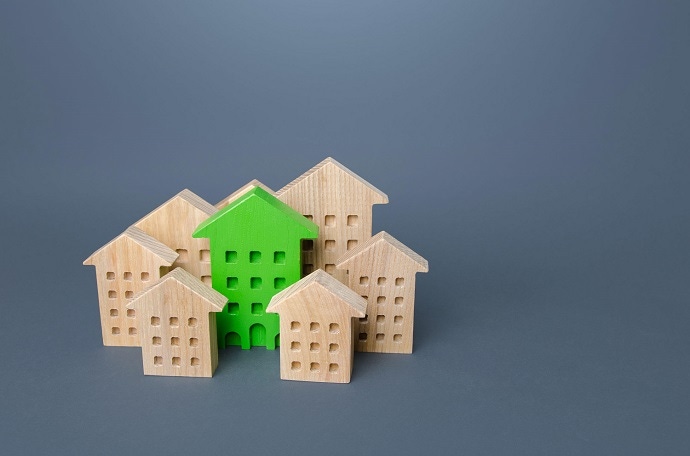Advances in digital systems are making it possible to build and retrofit office buildings, datacenters, factories, and hotels to reduce greenhouse gas emissions and support maximum sustainability.

As CIOs and other executives look for ways to expand sustainability initiatives, there’s a growing awareness that initiatives can’t stop at the four walls of the data center or office building. Today’s structures can contain hundreds of thousands of components that consume energy and add to an organization’s carbon footprint.
In fact, buildings consume one-third of all energy globally and produce one-quarter of all greenhouse gas emissions (GHGs), according to The World Resources Institute. What’s more, business and IT leaders are often narrowly focused on improving sustainability in data centers and procuring greener computing systems. Yet they overlook critical ways that technology can shrink a carbon footprint.
“There is a growing awareness that buildings and workspaces are a crucial part of sustainability initiatives,” states Bryon Carlock, National Real Estate Practice Leader for consulting firm PwC. “Understanding and managing energy use and embedded carbon in buildings plays an important role in limiting Scope 1 and Scope 2 CO2 emissions.”
To be sure, significant advances in digital systems -- the Internet of Things (IoT), analytics software, artificial intelligence (AI), machine learning (ML), 3-D printing and more -- are making it possible to build and retrofit office buildings, data centers, factories, hotels and other structures to support maximum sustainability.
Says Carlock: “The technology now exists to transform the way we build and manage energy systems within buildings. We’re able to put data to use and drive enormous improvements in energy use and overall sustainability.”
IT's Role in Green Building Maintenance
An unmistakable shift in thinking about the role of IT in driving sustainability efforts in buildings is unfolding. Environmental, social, and corporate governance (ESG) programs are partly responsible for this trend, but it’s also clear that “green” idealism is morphing into a pragmatic reality. Concerns about climate change are growing and there’s a growing recognition that smart buildings can lead to enormous cost savings. Fortunately, sensors and systems that were once difficult to install, manage, and use have become simpler and far more powerful.
“In the past, there wasn’t a great deal of momentum supporting and surrounding change, even though it was widely recognized as a good thing,” states Jennifer Layke, Global Director for Energy at the World Resources Institute. “The technology, economics and thinking are now far more favorable. As a result, we’re seeing a growing focus on constructing and retrofitting buildings to support sustainability efforts,” she notes.
In fact, PwC found that 82% of senior executives view climate change and carbon reduction as top-of-mind issues for real-estate development and purchases. Carlock says that while new types of low-carbon concrete and more sustainable building materials play a key role in advancements, the biggest gains revolve around the integration of technology with physical infrastructure and analytics systems that can spot patterns and identify paths to improvement.
“The convergence of digital technologies, including the IoT, is a game-changer,” states Gunnar Hubbard, a principal and Global Practice Leader on Sustainability at engineering firm Thornton Tomasetti. “Smart technologies are affecting the way structures are built and the way they are used.” He says that CIOs, CTOs, and others must also understand how to integrate alternative energy sources such as wind and solar while adopting software and systems to integrate disparate components, whether it’s in a data center or a high-rise building.
Prefab and 3D printed systems can trim a carbon footprint further. For instance, Canadian firm DIRTT, has developed pre-designed custom systems that virtually eliminate on-site construction. The modular components -- which incorporate recycled materials and include motion sensors and other technologies -- are simply rolled into an office or manufacturing space and deployed. The company says that its solutions lead to an average 12% reduction in energy consumption and a 25% lower overall footprint.
Yet, the biggest gains, for now, are taking place in the energy monitoring space. As traditional HVAC systems gain digital and IoT capabilities, it’s possible to peer deep into buildings and spaces and understand energy use in new ways, Carlock says. GE, Honeywell, Johnson Controls, and others are introducing systems that digest massive amounts of data and use machine learning to adjust and adapt continuously.
“We are seeing sensors embedded in floors, walls, and ceilings. Machine vision, thermal sensors, and other devices can determine the occupancy load of a floor, or even part of a floor, and adapt lighting, heating or cooling in real time.” When these systems are used with other smart technologies, such as electrochromic windows, often referred to as smart glass that adapts to both external and internal conditions, it’s possible to optimize climate controls further.
How Data Analytics Help Sustainable Buildings
Not surprisingly, analytics is the glue that holds everything together. Increasingly sophisticated controls and software not only manage HVACs and other digital systems, but also deliver insights into trends and feed information to ESG software and data collection frameworks. For instance, a building analytics platform from UK-based software firm CIM links and syncs building intelligence systems, machine learning, and other data points so that it’s possible to view an energy portfolio, gauge actual performance compared to targets, and understand operating cost (OPEX) reductions. In addition, as the system learns patterns, it automatically adjusts systems to maximize comfort but minimize the carbon footprint.
Other analytics platforms, such as IBM’s Envizi, can track energy efficiency, including how renewable assets stack up against conventional forms of energy, detailed HVAC performance and overall sustainability analytics. Many solutions include detailed dashboards and reports and connect to ESG and sustainability reporting systems. Some also offer advanced modeling, simulations, and even digital twins.
A United Nations report, 2020 Global Status Report for Buildings and Construction, noted that getting to net-zero carbon in the building sector is possible with today’s technology. The report also pointed out that innovations and improvements could result in 40% embodied carbon reduction by 2030. Yet, faster and deeper adoption is required. There’s also a need for better measurement systems, a greater use of renewables, and a greater use of analytics and machine learning to reduce energy demand and further optimize buildings.
Meeting increasingly ambitious goals for sustainability won’t be easy but it’s doable, PwC’s Carlock contends. He says that CIOs, CTOs, and others must play a central role in defining a strategic direction, integrating systems and software, and ensuring that various forms of data contribute to ongoing sustainability gains. “We are seeing more and more movement in the smart building space,” he concludes. “How buildings are designed and how they perform are critical pieces of the sustainability puzzle.”
What to Read Next:
About the Author(s)
You May Also Like







